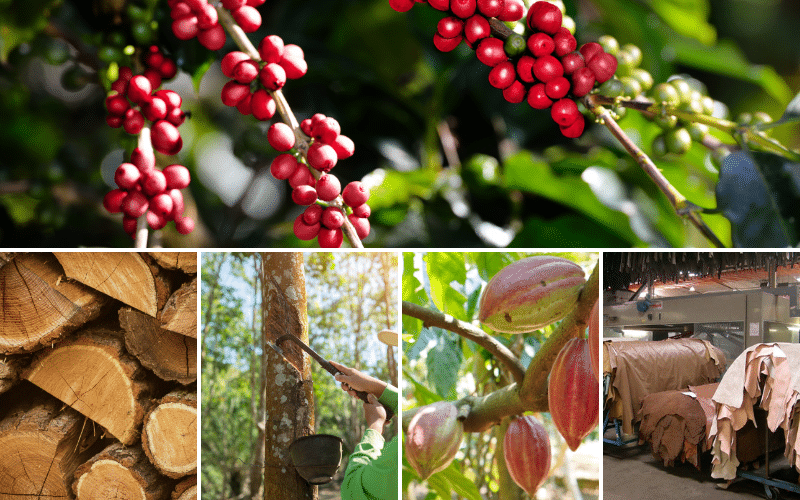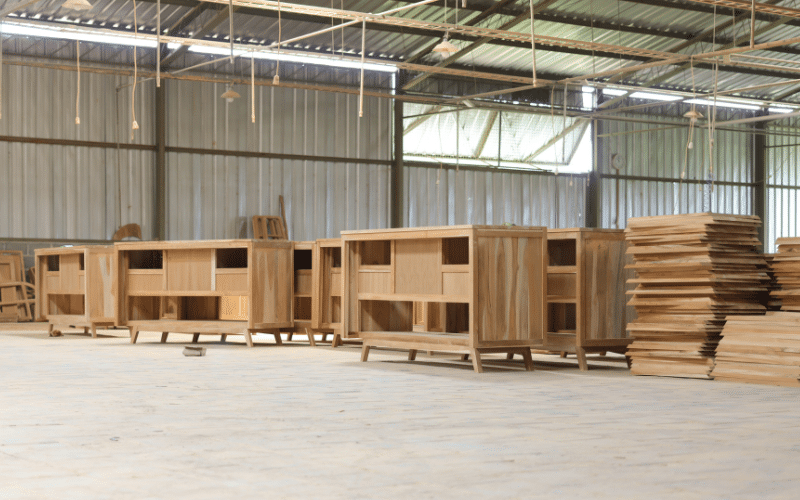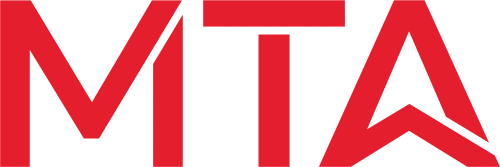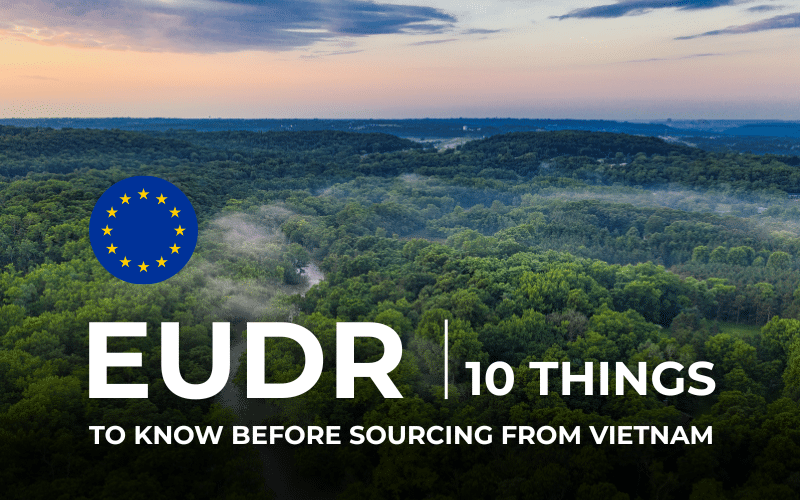The European Union Deforestation Regulation (EUDR) is reshaping global trade. For importers and sourcing professionals, understanding its impact is no longer optional, it’s essential. Vietnam, one of the EU’s major suppliers of coffee, wood products, and rubber, is now under the spotlight. In this article, we break down the ten most important things you should know about the EUDR before sourcing from Vietnam.
What Is the EUDR?
The EU Deforestation Regulation (EUDR) aims to ensure that goods imported to or exported from the EU are not linked to deforestation or forest degradation after December 31, 2020. It replaces the previous EU Timber Regulation (EUTR) and broadens the scope from timber to seven key commodities with high deforestation risks. The regulation also requires proof of legal production and traceability across the supply chain.
Which Products Are Affected?
The EUDR covers seven major commodities and their derived products:
- Coffee
- Cocoa
- Cattle (and leather products)
- Palm oil
- Soy
- Rubber
- Wood
These categories include not only raw materials but also finished products such as furniture, paper, footwear, and food items. For sourcing, this means that even indirect inputs (like rubber soles or wooden packaging) may fall under EUDR scrutiny.
When Will the EUDR Take Effect?
The regulation officially entered into force on June 29, 2023.
However, businesses have a transition period before enforcement:
- Large and medium companies must comply by December 30, 2025.
- Small and micro enterprises have until June 30, 2026.
Products already placed on the EU market before these dates will not be affected. For Vietnam-based exporters and EU importers, now is the time to establish compliance systems before the regulation becomes fully operational.
Looking for a deeper market study and compliance roadmap? Download our full white paper: “EU Deforestation Regulation (EUDR): Overview and Implications for Vietnam – White Paper & Market Study 2025.”
What Does “Due Diligence” Mean Under the EUDR?
Every company trading EUDR-covered products must conduct due diligence to prove that their goods:
- Are not sourced from land deforested after 2020.
- Are legally produced under local laws.
- Can be geographically traced to their origin (GPS coordinates).
Before placing products on the EU market, companies must submit a Due Diligence Statement through an EU-wide digital platform. Violations may lead to heavy fines, confiscation of goods, or market bans.
How Is Vietnam Classified Under EUDR Risk Categories?
EU authorities will categorize countries as low, standard, or high risk.
In May 2025, Vietnam was officially assessed as “low risk” due to its active government engagement, existing forest management systems, and partnerships with EU institutions.
This classification is a major advantage: only about 1% of Vietnam’s exports under EUDR categories will face random checks, compared to 9% or more for high-risk countries. It gives Vietnam a clear edge in maintaining stable export flows to the EU.
How Does EUDR Affect Sourcing from Vietnam?
Vietnam is deeply integrated into global supply chains for several EUDR commodities. While the regulation introduces new challenges, it also reinforces Vietnam’s reputation for sustainable manufacturing. Below are the key sectoral insights:

Coffee
Vietnam is the world’s second-largest coffee producer, with the EU accounting for about 40% of its total coffee exports. The country’s coffee sector is dominated by hundreds of thousands of smallholder farmers, mostly cultivating Robusta on plots smaller than two hectares. Nearly 96% of these farms were established before 2020, meaning they meet the EUDR’s deforestation-free cutoff. However, compliance remains difficult due to limited record-keeping and unclear land documentation, especially among ethnic minority farmers who lack official land-use certificates.
Wood and Furniture
Vietnam’s furniture industry, a major export to Europe, is well prepared thanks to the FLEGT-VPA and VNTLAS systems, which already ensure legal timber sourcing. To comply with EUDR, companies will need to add geolocation and deforestation-free verification. Although it may increase short-term costs, it strengthens Vietnam’s image as a reliable and sustainable furniture hub.
Rubber
Over half of Vietnam’s rubber output comes from smallholders, many of whom lack digital mapping. However, pilot projects have shown promise: traceable rubber certified under EUDR principles can fetch $150–300 per ton higher prices in EU markets. Expanding these traceability systems could turn Vietnam into a preferred sourcing base for ethical rubber.
Cocoa
Vietnam’s cocoa sector is small but fast-growing. Because most plantations are older than 2020 and located outside forested zones, compliance is achievable. Several EU-supported projects are helping local farmers build “circular cocoa” models that combine productivity with reforestation, a compelling story for European buyers.
Cattle & Leather
Vietnam’s direct cattle exports to the EU are limited, its footwear and bag industries depend on imported leather. Under EUDR, these products must prove that the leather originates from deforestation-free cattle farms. Local manufacturers are working to enhance traceability across the leather supply chain, from tanneries to finished goods.
What Are the Main Challenges for Vietnam?
One of the main challenges for Vietnam under the EUDR is traceability and data collection. The regulation requires exporters to provide geolocation or polygon data for the origin of commodities such as coffee, rubber, and timber. However, in Vietnam coffee and rubber sectors, many farmers operate on small, fragmented plots without clear land titles, making it difficult to trace raw materials back to a specific farm or plantation.
Another major challenge is institutional capacity and coordination. The compliance with the EUDR involves multiple ministries including the Ministry of Agriculture and Rural Development (MARD) and the Ministry of Industry and Trade (MOIT) yet coordination among agencies remains limited. This creates delays in building a national database for deforestation-free sourcing.
In addition, Vietnam faces pressure on its timber and rubber supply chains. Even though the country is classified as “low risk” for deforestation, many wood inputs are imported from higher-risk countries such as Laos or Cambodia. As the report explains, timber processors that re-export products to the EU will have to trace imported wood back to its country of harvest, which is costly and complex for small and medium enterprises.
What Opportunities Does EUDR Create?
For Vietnam, EUDR is not just a regulation, it’s a catalyst for transformation.
By implementing transparent traceability systems, Vietnam can:
- Strengthen its position as a sustainable sourcing destination.
- Attract high-value buyers seeking responsible supply chains.
- Build long-term trust with European importers and retailers.
Government initiatives like the National Agricultural Database and cross-sector collaboration between the Ministry of Agriculture and Environment reflect Vietnam’s proactive stance.
How Should Importers Prepare When Sourcing from Vietnam?
Importers sourcing from Vietnam should focus on traceability, supplier verification, and due diligence to comply with the EUDR. They need to work with Vietnamese suppliers who can provide geolocation or polygon data for raw materials such as coffee, rubber, and timber. For example, exporters of wooden furniture must trace the origin of logs, including those imported from Laos or Cambodia, before re-exporting to the EU.
Importers should also build long-term partnerships with factories and cooperatives that are investing in digital traceability systems. Collaborating on training and data collection helps ensure compliance and reduces risk. In addition, importers should require suppliers to maintain transparent records and update them regularly through verified platforms or third-party audits.

Why Vietnam Could Become a Model for EUDR Compliance
Among producing countries, Vietnam stands out for its early preparation and government-industry collaboration. With its low-risk rating, digital mapping initiatives, and sustainability-oriented manufacturing, Vietnam could become a regional benchmark for EUDR compliance. For companies sourcing from Vietnam, this means greater confidence, smoother customs clearance, and long-term supply stability.
Conclusion
The EUDR marks a global shift toward responsible sourcing. For Vietnam, it is both a challenge and a chance to lead. By combining traceability, transparency, and sustainability, the country is well-positioned to turn EUDR compliance into a competitive advantage. For importers, the message is clear: sourcing from Vietnam is not only low-risk, it’s future-ready.
Download the FVSource white paper “EU Deforestation Regulation (EUDR): Overview and Implications for Vietnam” to explore data, sector insights, and compliance strategies.

